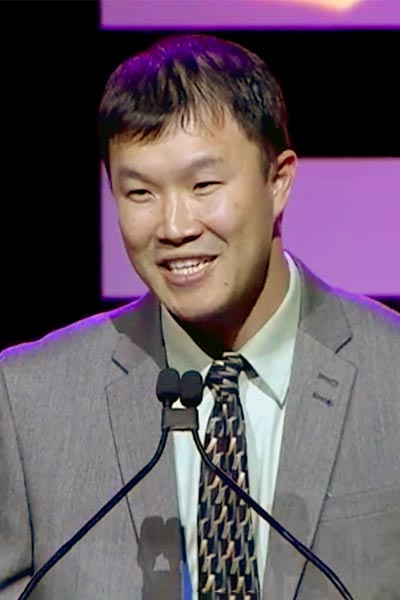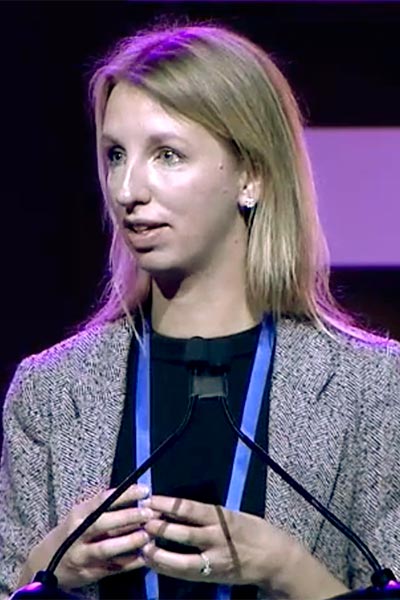Adding methotrexate improves treatment benefits of pegloticase in gout

Adding a moderate dose of oral methotrexate to pegloticase in patients with refractory gout lowers serum urate (SU) more effectively than pegloticase plus placebo for up to 52 weeks. Oral methotrexate plus pegloticase also resolved tophi more effectively and reduced infusion reactions versus pegloticase plus placebo.
John K. Botson, MD, Orthopedic Physicians Alaska, opened Plenary I on Saturday with 12-month data from the MIRROR RCT. The session is available for on-demand viewing for registered ACR Convergence participants through October 31, 2023, on the virtual meeting website.
“You have all seen the initial 24-week results of MIRROR RCT, which was presented last May,” Dr. Botson said. “The treatment group differences we saw early in the trial persisted through month 12 with no new safety concerns. These results confirm the improved efficacy and safety of pegloticase when co-administered with 15 mg per week of oral methotrexate.”
Pegloticase can lower SU effectively, but 89 percent of patients develop anti-drug antibodies during monotherapy, which limits urate-lowering response and increases the risk of infusion reactions. MIRROR RCT was designed to compare 8 mg IV pegloticase every two weeks plus 15 mg per week of oral methotrexate versus pegloticase plus placebo over 52 weeks. A total of 100 patients were randomized to pegloticase plus methotrexate and 52 to pegloticase plus placebo after a four-week methotrexate tolerability test. The primary endpoint was SU <6 mg/dL for at least 80 percent of weeks 20–24.
At six months, 71 percent of patients co-treated with methotrexate met the primary endpoint versus 38.5 percent of placebo patients (p<0.0001). At 52 weeks, 60 percent of methotrexate patients had SU <6 mg/dL versus 30.8 percent of placebo patients (p≤0.003). In patients with at least one tophus at baseline, 34.6 percent of those on methotrexate showed complete resolution of ≥1 tophi versus 13.8 percent of placebo patients. By week 52, 53.7 percent of methotrexate patients had complete resolution of tophi versus 31 percent of placebo patients (p≤0.048 for both).
The methotrexate group also developed new anti-PEG antibodies at a lower rate than the placebo group, 31.6 percent versus 58.3 percent, and had a lower rate of infusion reactions, 13.3 percent versus 32.1 percent. There was no significant difference in adverse events or acute gout flares.
New cancer screening recommendations for patients with idiopathic inflammatory myopathy

“A quarter of patients with idiopathic inflammatory myopathy develop some form of cancer within three years before or after the onset of myopathy. New consensus guidelines promise to help clinicians stratify patients by cancer risk and recommend specific screening approaches based on high, intermediate, and low cancer risk.
“Cancer is the leading cause of death for adults with myositis, and cancer is overwhelmingly detected at later stages,” said Alexander Oldroyd, PhD, MSC, MBChB, NIHR Clinical Lecturers, University of Manchester, United Kingdom. “Early diagnosis is essential to improve outcomes and screening is essential for early detection.”
Dr. Oldroyd discussed the latest consensus recommendations to risk-stratify and screen myositis patients for cancer published in Rheumatology in 2021. The recommendations are based on a Delphi assessment of 117 studies by 75 rheumatology practitioners and three patient partners in 22 counties.
Low-risk factors include antisynthetase syndrome and connective tissue disease subtypes with clinical features such as Raynaud’s disease and interstitial lung disease (ILD). Intermediate risk factors include clinically amyopathic dermatomyositis, polymyositis and immune-mediated necrotizing myopathy subtypes in males. High-risk factors are dermatomyositis with age >40 at onset, persistent high disease activity despite therapy, dysphagia, and cutaneous necrosis.
Basic screening for cancer includes familiar elements, including a comprehensive history and physical exam, comprehensive blood count, serum liver function, erythrocyte sedimentation rate, C-reactive protein and protein electrophoresis tests, urinalysis, and chest X-ray. Enhanced screening adds CT scan of neck, thorax, abdomen and pelvis, cervical screening and mammography, prostate-specific antigen testing, CA-125, abdo-trans-vaginal ultrasound for ovarian cancer, and fecal occult blood testing.
Screening frequency varies by risk, Dr. Oldroyd said. Patients at high risk have ≥2 high-risk factors and should have both basic and enhanced screening at myositis diagnosis and yearly for three years.
Patients at intermediate risk should have both basic and enhanced screening at myositis diagnosis.
All other patients are at low risk and need only a basic screening at myositis diagnosis.
“I would emphasize that low risk is low in relation to all patients with myositis, not the general population,” Dr. Oldroyd emphasized. “All patients with myositis are at increased risk for cancer.”
Rituximab, cyclophosphamide similarly effective in connective tissue disease with ILD

The UK-based RECITAL trial comparing rituximab and cyclophosphamide in patients with connective tissue disease (CTD) associated with ILD found no difference in patient outcomes between the two groups. A subgroup analysis suggests that both agents are similarly effective in myositis with suggestions of better effects for rituximab in mixed CTD.
RECITAL, published in The Lancet Respiratory Medicine, was a basket trial with patients who had a variety of connective tissue diseases, said Toby Maher, MD, Professor of Clinical Medicine, Keck School of Medicine at the University of Southern California.
Over 24 and 48 weeks, rituximab and cyclophosphamide showed similar improvements in forced vital capacity (FVC) from baseline for the overall RECITAL population. For patients with systemic sclerosis, both agents appeared to stabilize FVC over 48 weeks. And for patients with mixed CTD and myositis, both agents produced similar improvement in FVC.
The subgroup of patients with systemic sclerosis showed improvements in skin thickness as measured by modified Rodnan skin score (mRSS) with rituximab but not with cyclophosphamide.
“In patients with systemic sclerosis, we saw little treatment effect with cyclophosphamide,” Dr. Maher reported. “With rituximab, we saw an improved skin score at 12, 24, and 38 weeks, with a p=0.01. Both agents can lead to clinical and quality-of-life improvements. The data show that rituximab should be considered as an alternative to cyclophosphamide in patients with CTD-ILD.”
mTOR inhibition may be effective for systemic JIA patients with MAS

Up to 30 percent of children with systemic juvenile idiopathic arthritis (sJIA) are complicated by macrophage activation syndrome (MAS). A combination of mouse and human data suggest that sJIA is a continuum of disease that extends to MAS and that treatment with existing inhibitors of mechanistic target of rapamycin (mTOR) may be helpful.
“We know that IL-1 is a key mediator of inflammation in sJIA and IL-1 antagonists are a first-line treatment,” said Pui Yl Lee, MD, PhD, Assistant Professor of Pediatrics, Boston Children’s Hospital. “We used mouse models, transcriptomic data sets, and human samples to better understand the biology of sJIA and the connection with MAS.”
Single cell RNA-sequencing of IL-1 receptor knockout mice, a familiar model of sJIA, show mTORC1 gene signature and increased mTORC1 activation, Dr. Lee said. Rapamycin attenuates arthritis and inflammation in these mice. A similar mTORC1 gene signature and can be seen in patients with sJIA. The mTORC1 gene is further upregulated in patients with sJIA and MAS.
Overactivation of mTORC1 in mice leads to spontaneous inflammation and MAS that is similar to mTORC1 activation in humans with MAS. In mice, both inflammation and MAS are reduced with rapamycin.
“This raises the possibility of using mTOR inhibitors that are already available to attenuation inflammation and MAS in humans, Dr. Lee said. “Systemic JIA is a continuum of disease based on both genetic and environmental factors.”
Rheumatology ECHO improves rheumatoid arthritis care for Navajo Nation

Improving primary care provider education using a rheumatoid arthritis-specific Extension for Community Healthcare Outcomes (ECHO) is improving rheumatology care for the Navajo Nation in Arizona, Utah, Colorado, and New Mexico. This population of 174,000 is scattered across a rugged area that is five times the size of Connecticut and is served by just one full-time clinical rheumatologist despite a five-fold prevalence of rheumatoid arthritis (RA) compared to the general U.S. population.
“The U.S. as a whole faces a severe shortage of rheumatology providers,” said Jennifer Mandal, MD, Assistant Professor of Medicine, University of California, San Francisco. “The shortage is far more severe in rural areas and in specific populations, including Native Americans. We wanted to see if Project ECHO, which has improved care and outcomes for hepatitis C in underserved populations globally, can help with RA.”
Project ECHO aims to improve care for underserved communities by de-monopolizing specialty care, Dr. Mandal explained. For the Navajo Nation, that meant a 12-week RA curriculum via Zoom webinars for Navajo area primary care providers by an interprofessional panel of RA experts and Navajo cultural interpreters.
“RA guidelines call for escalation to biologic therapy for RA patients who have inadequate response to conventional DMARDs, but about 25 percent of homes on the Navajo reservation lack electricity, so patients may not be able to refrigerate medications,” Dr. Manda said. “Patients on methotrexate must have labs every three months, but roads in the area are often impassible in winter, which complicates monitoring. And there is a deep, justified mistrust of sharing private health information that can require a long period to establish trust.”
Evaluation of the first two ECHO cohorts shows significant improvement in participants’ RA knowledge scores for both diagnosis and management of RA, 47 percent versus 72 percent and 60 percent versus 86 percent, respectively (p<0.0001 for both). There were similar improvements in participant confidence scores, 3.25 to 4.05 out of 5 for RA diagnosis (p<0.0002) and 2.78 to 4.01 for RA management (p<0.0001) before and after ECHO.
“ECHO is a low-cost and very effective training model to support communities and improve rheumatology care,” Dr. Mandal said. “Our next steps are to expand to other Native American communities in 2023, launch a spondyloarthritis ECHO for the Navajo Nation and evaluate patient outcomes.”
Register Today for ACR Convergence 2025

If you haven’t registered for ACR Convergence 2025, register today to participate in this year’s premier rheumatology experience, October 24–29 in Chicago. All registered participants receive on-demand access to scientific sessions after the meeting through October 31, 2026.
